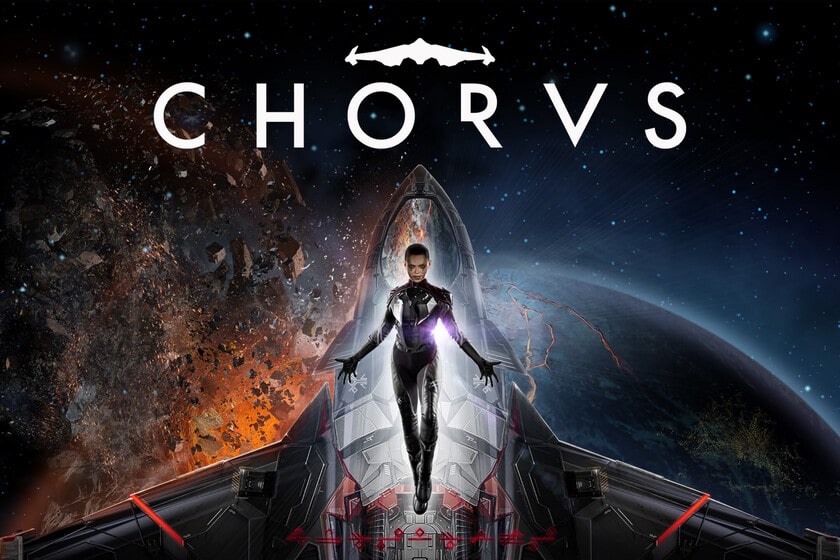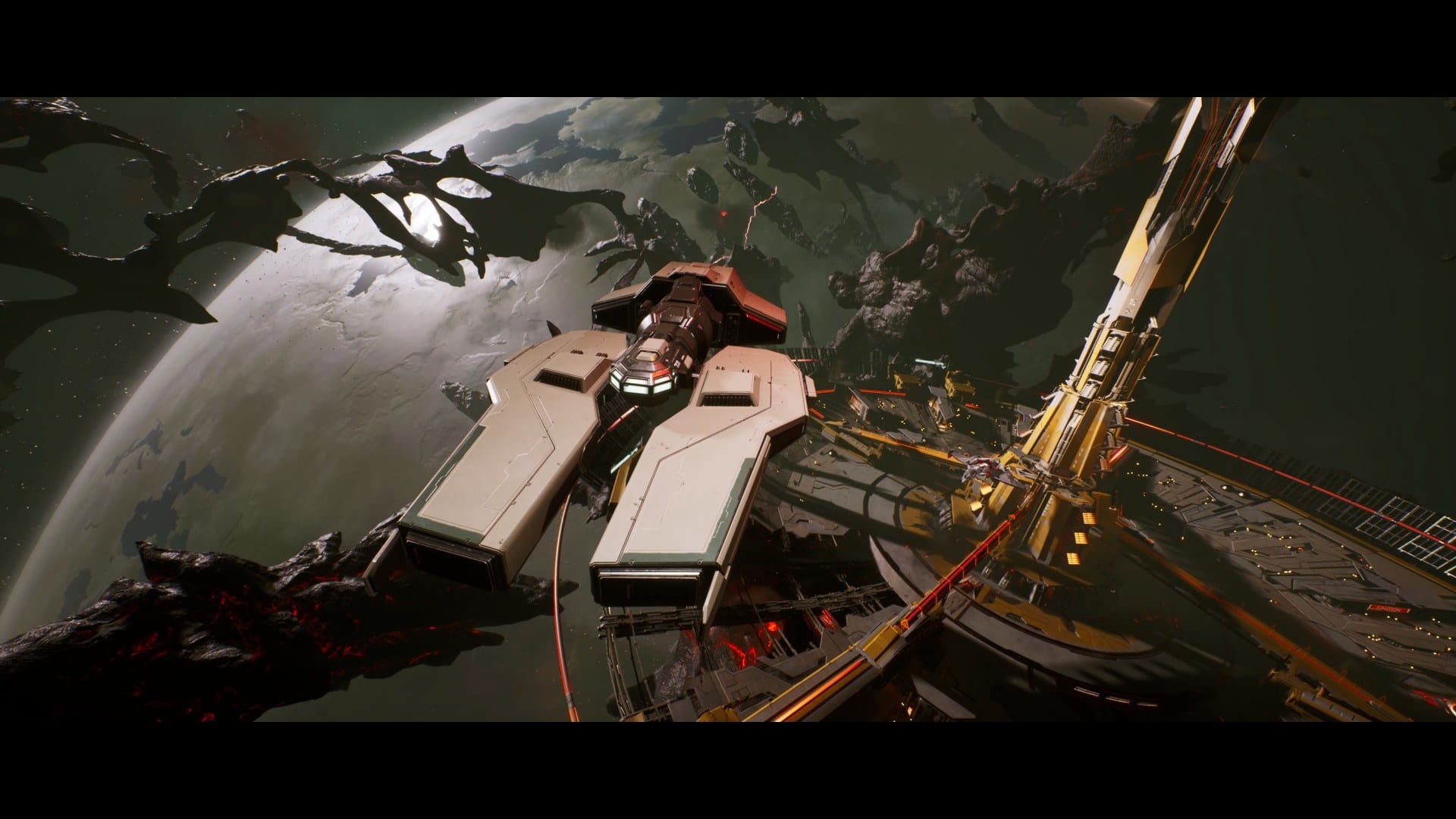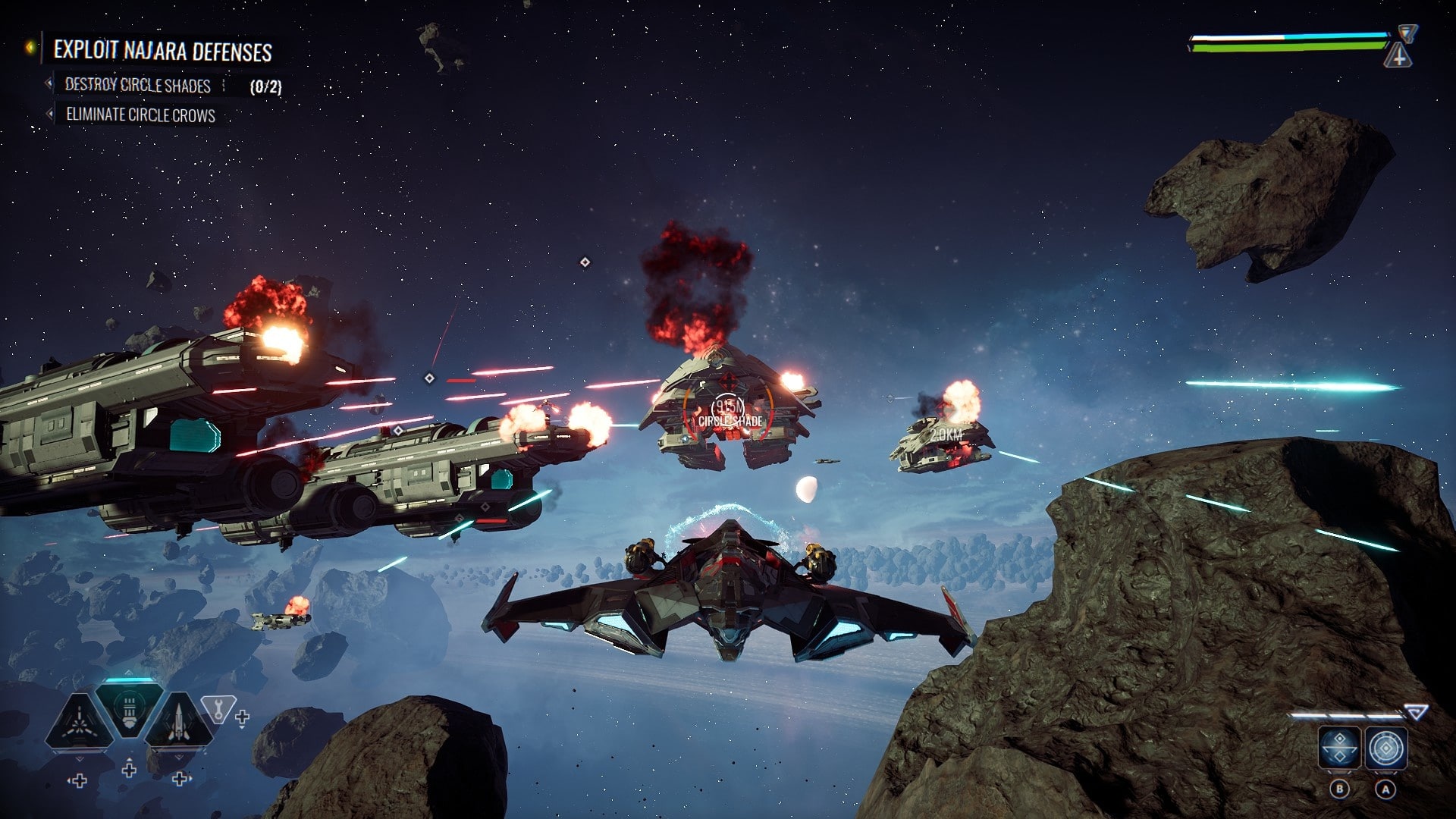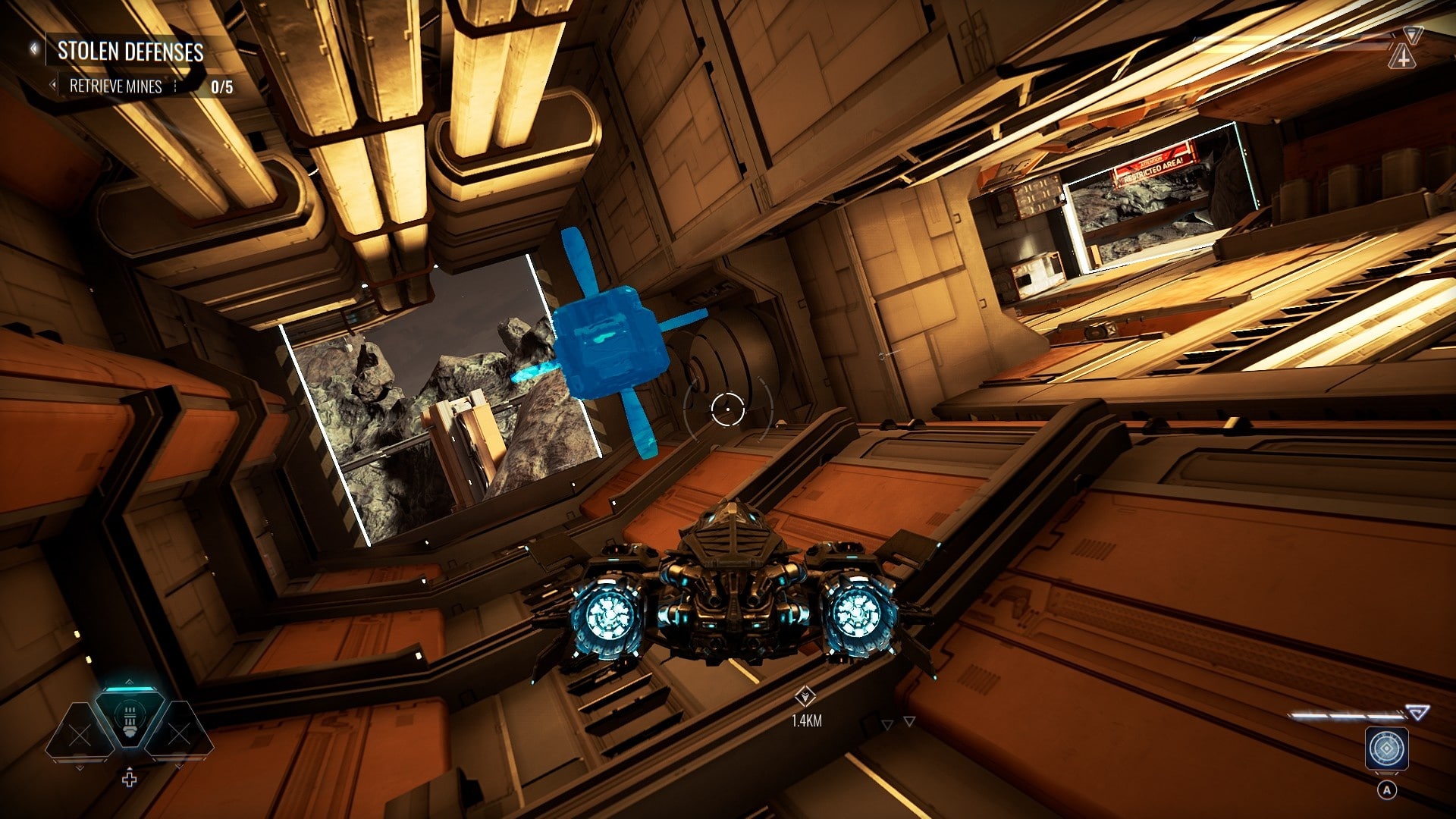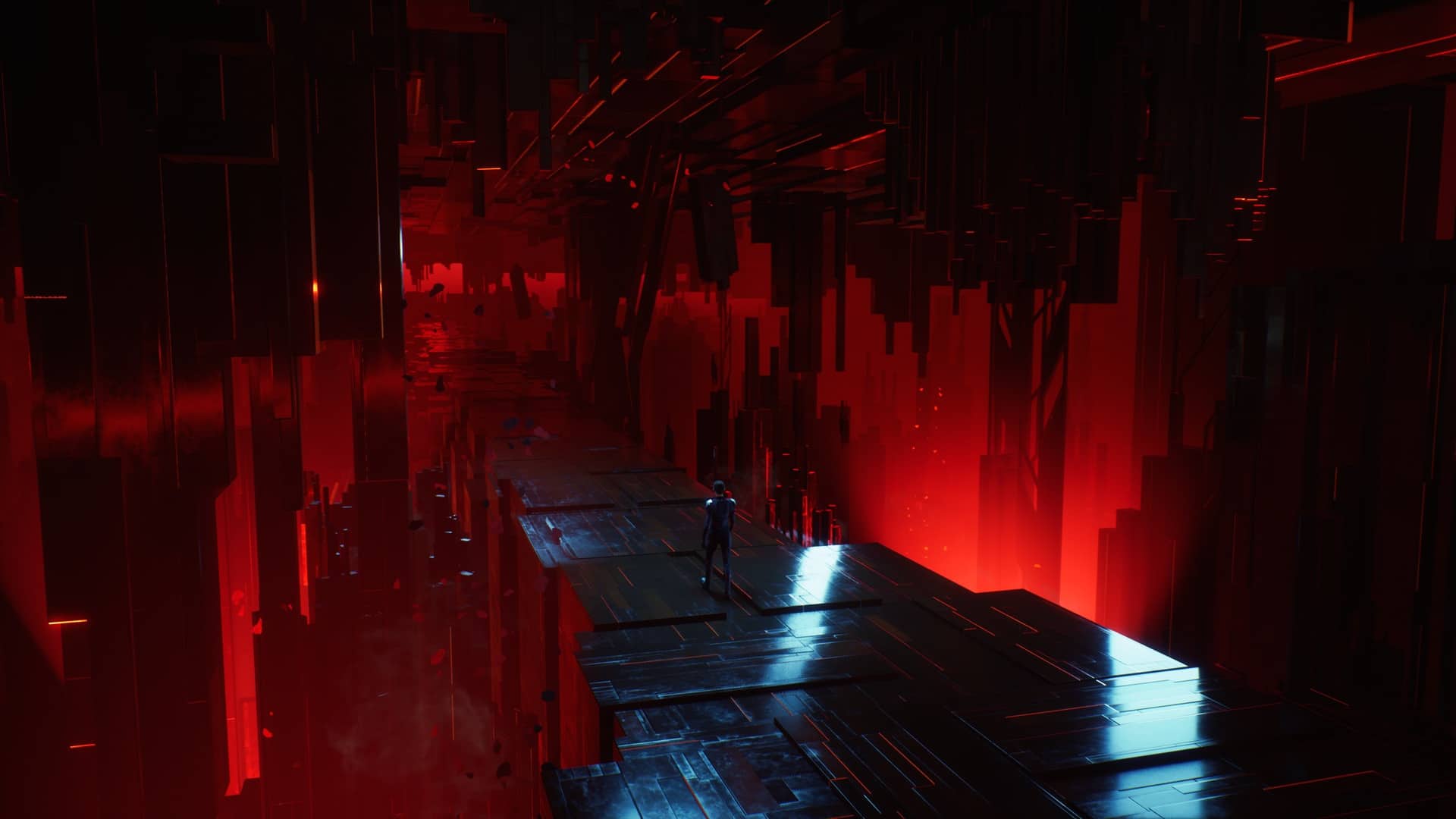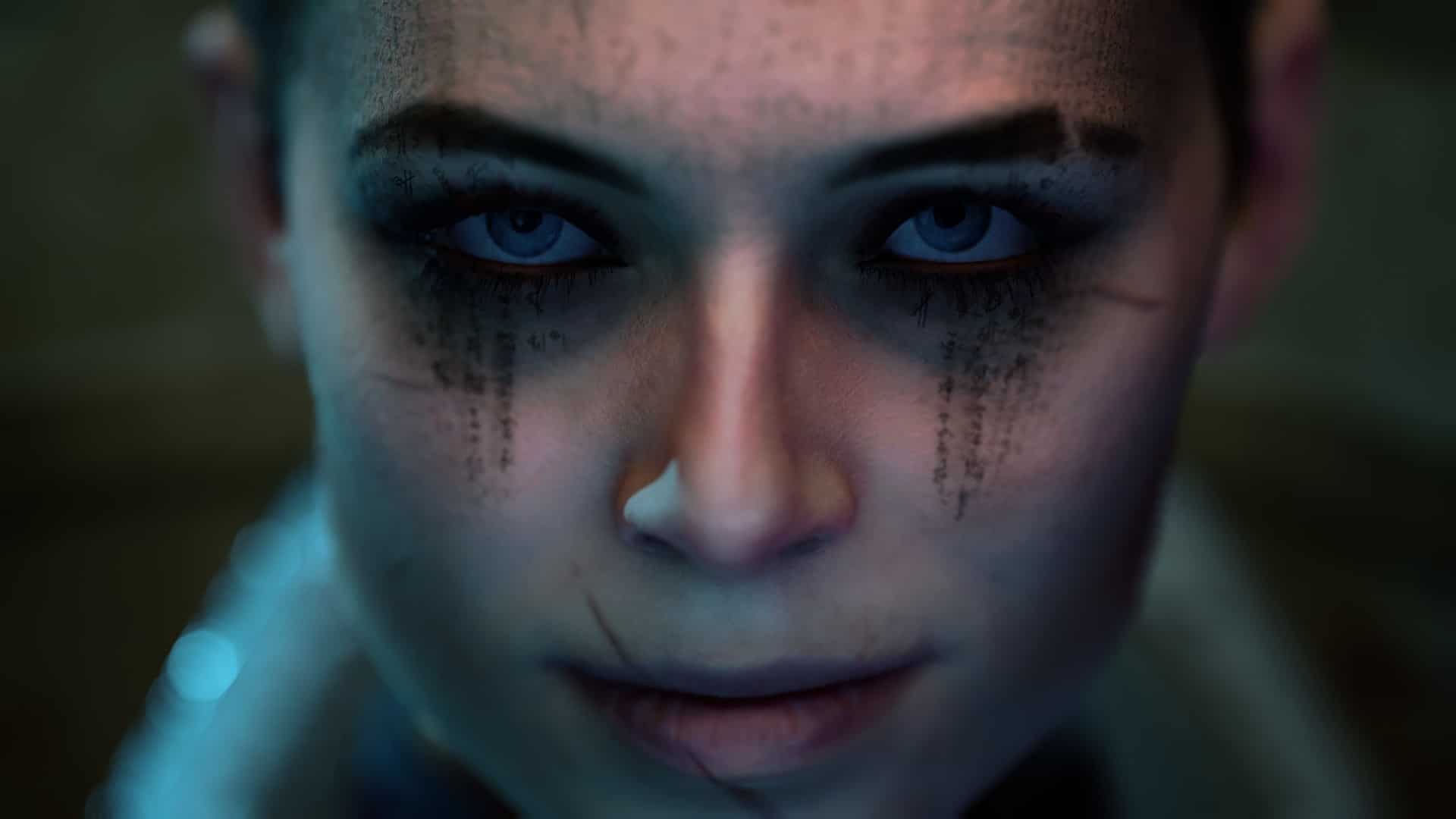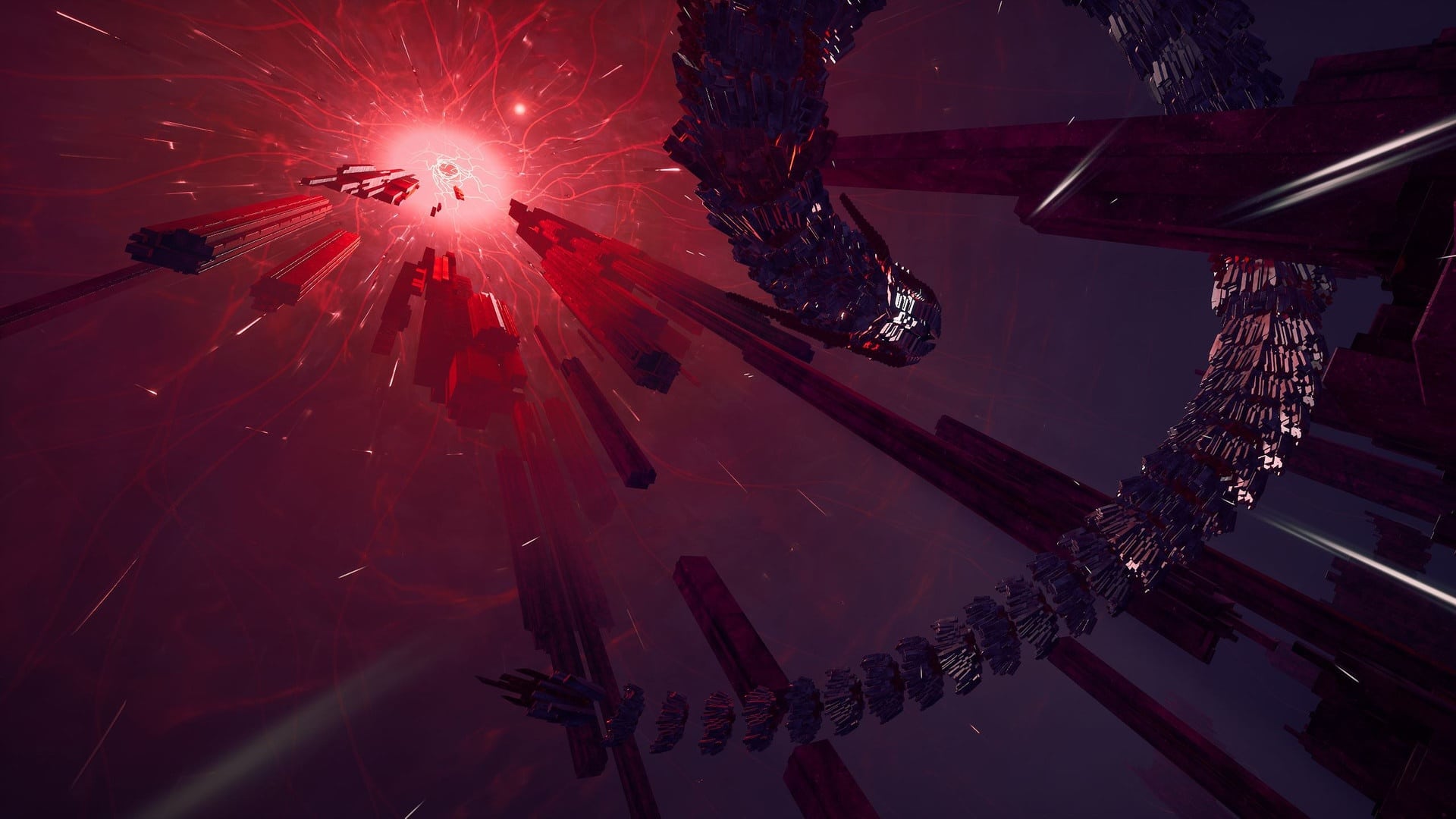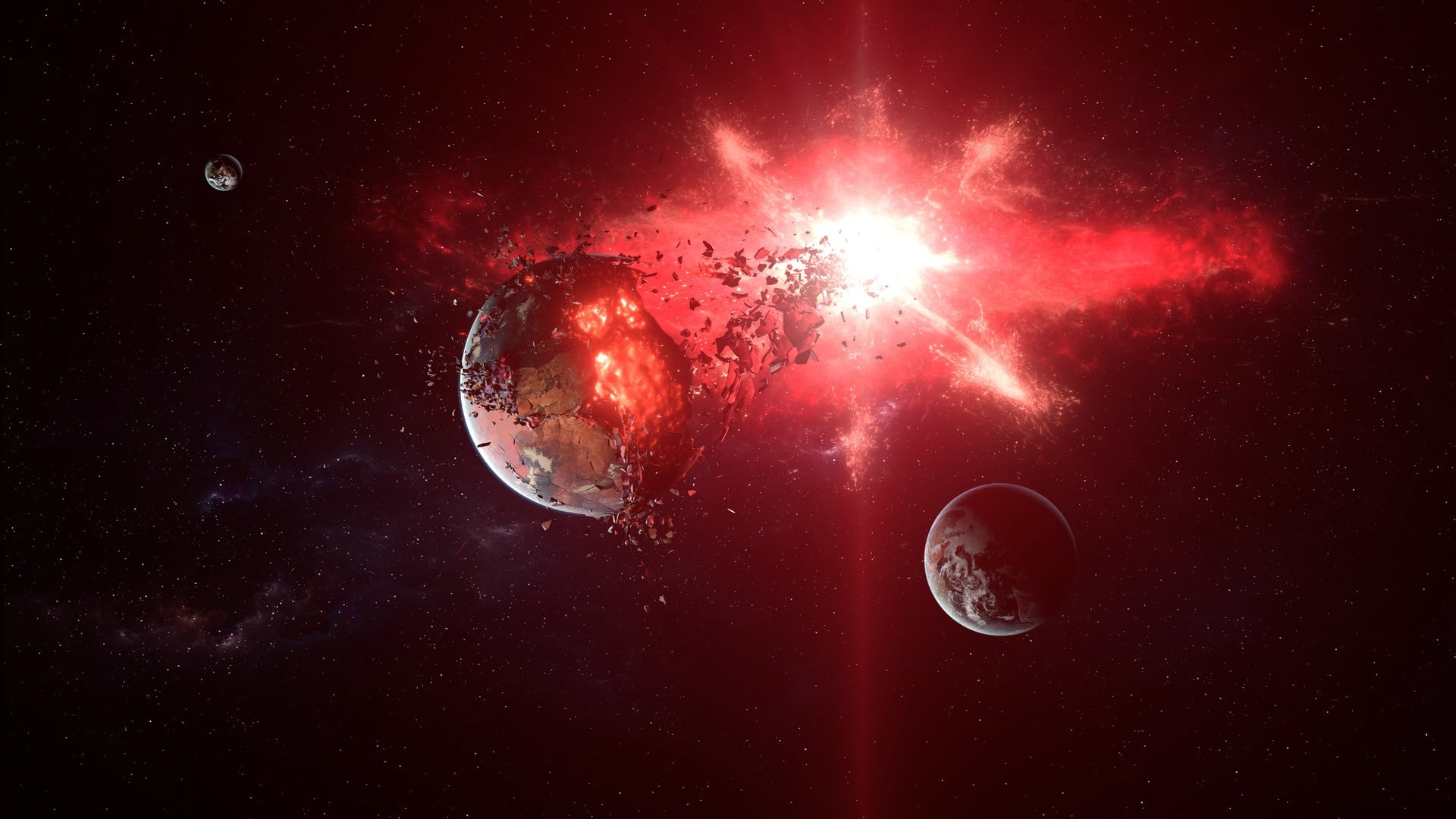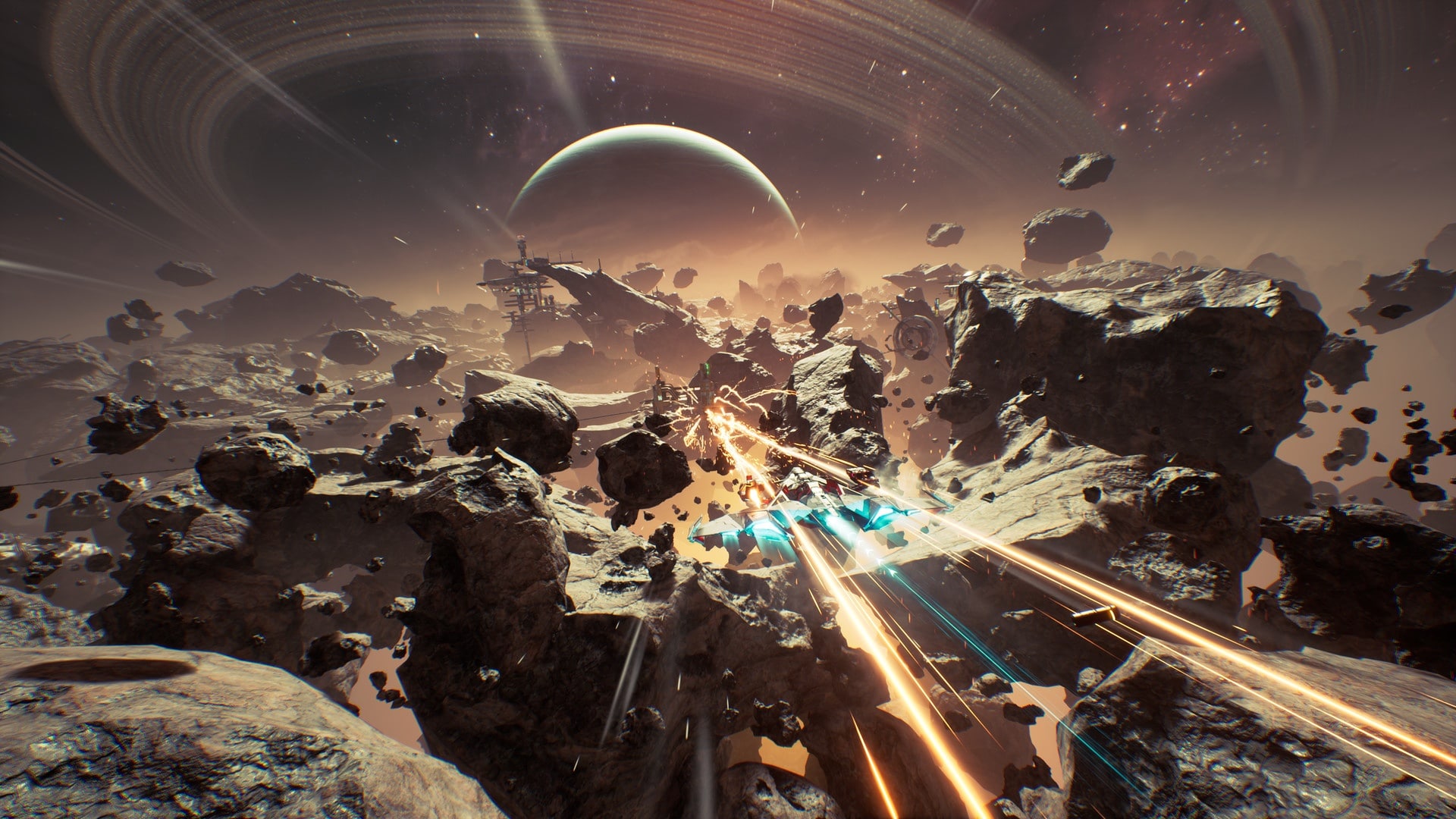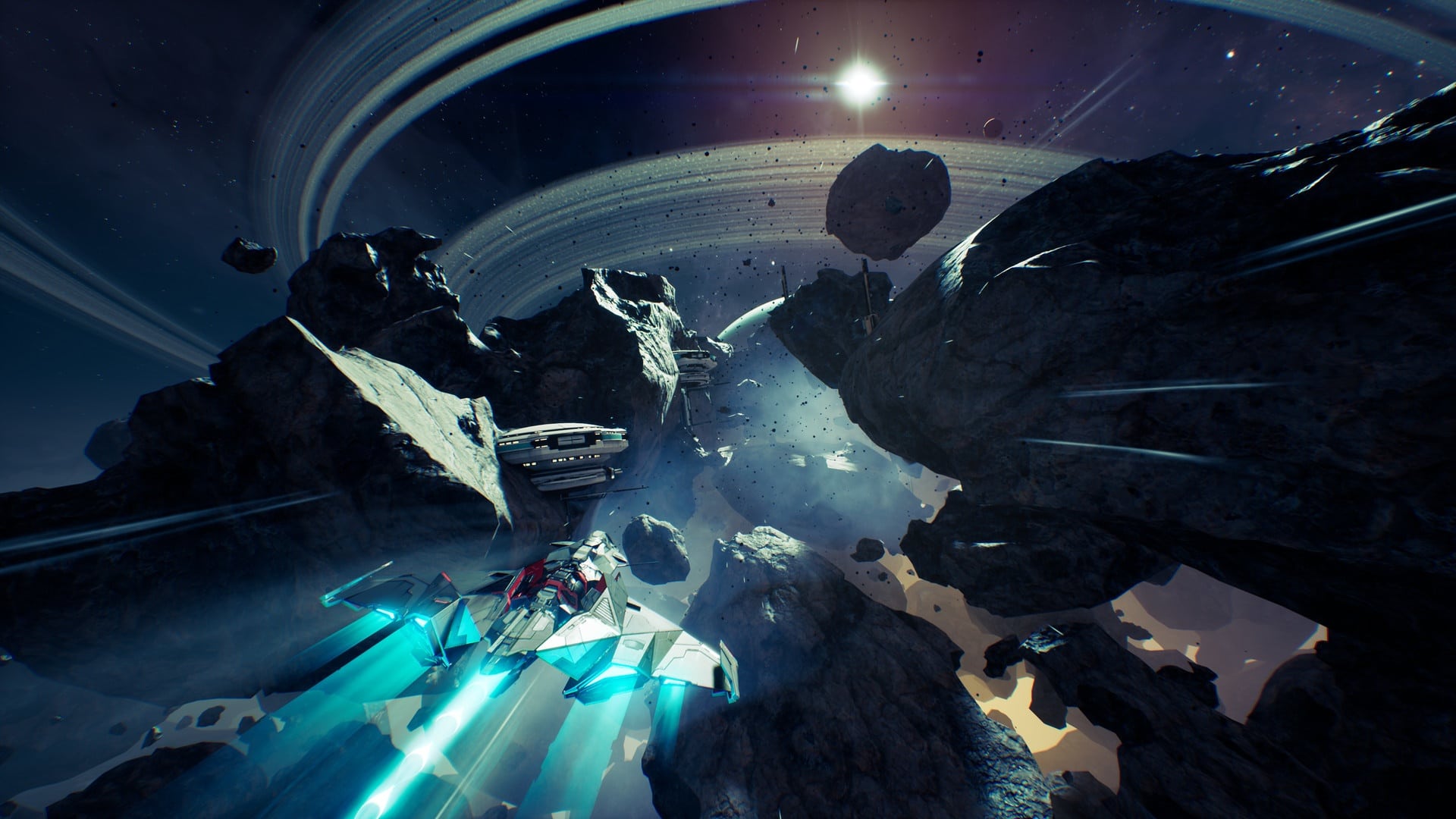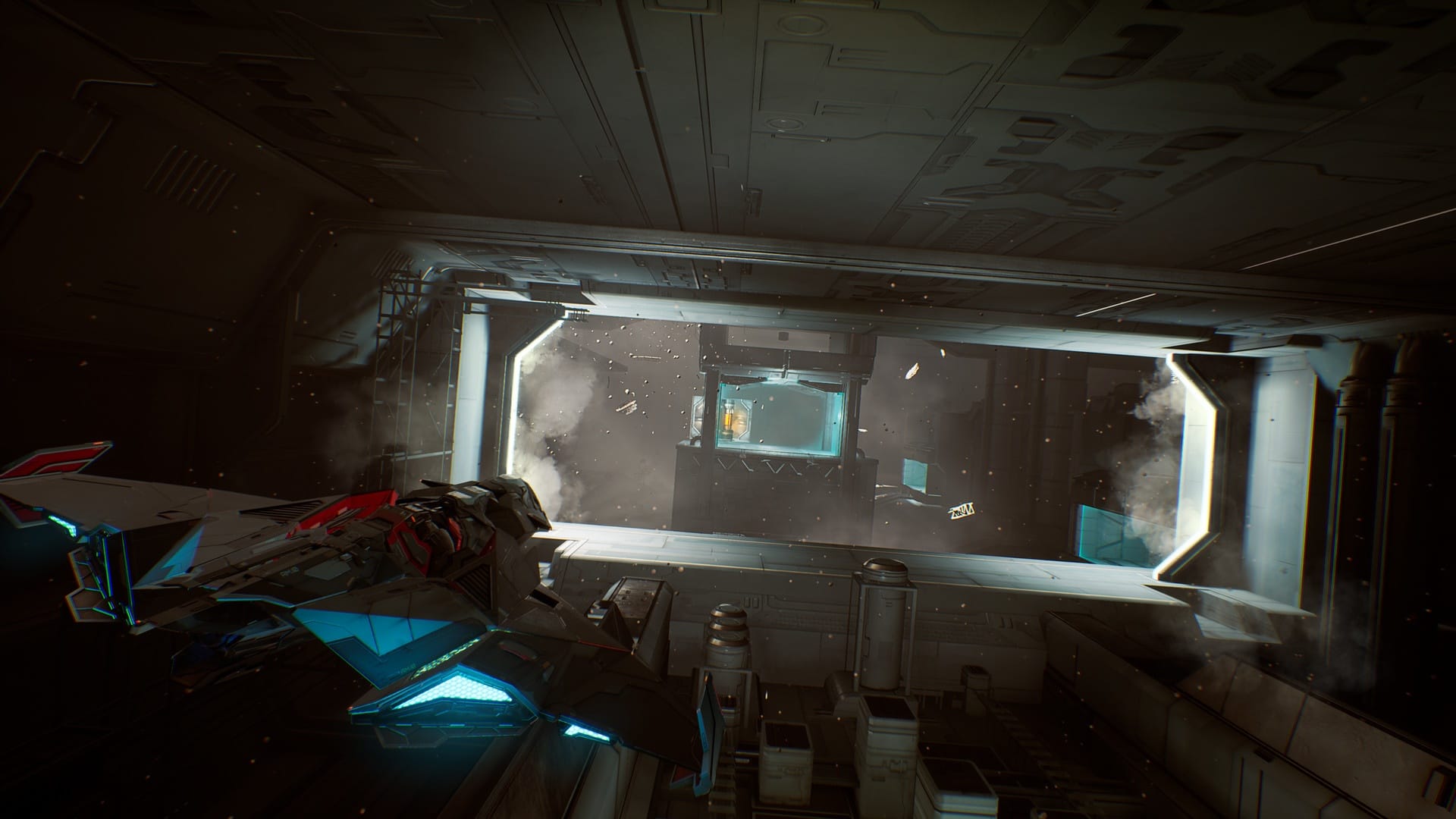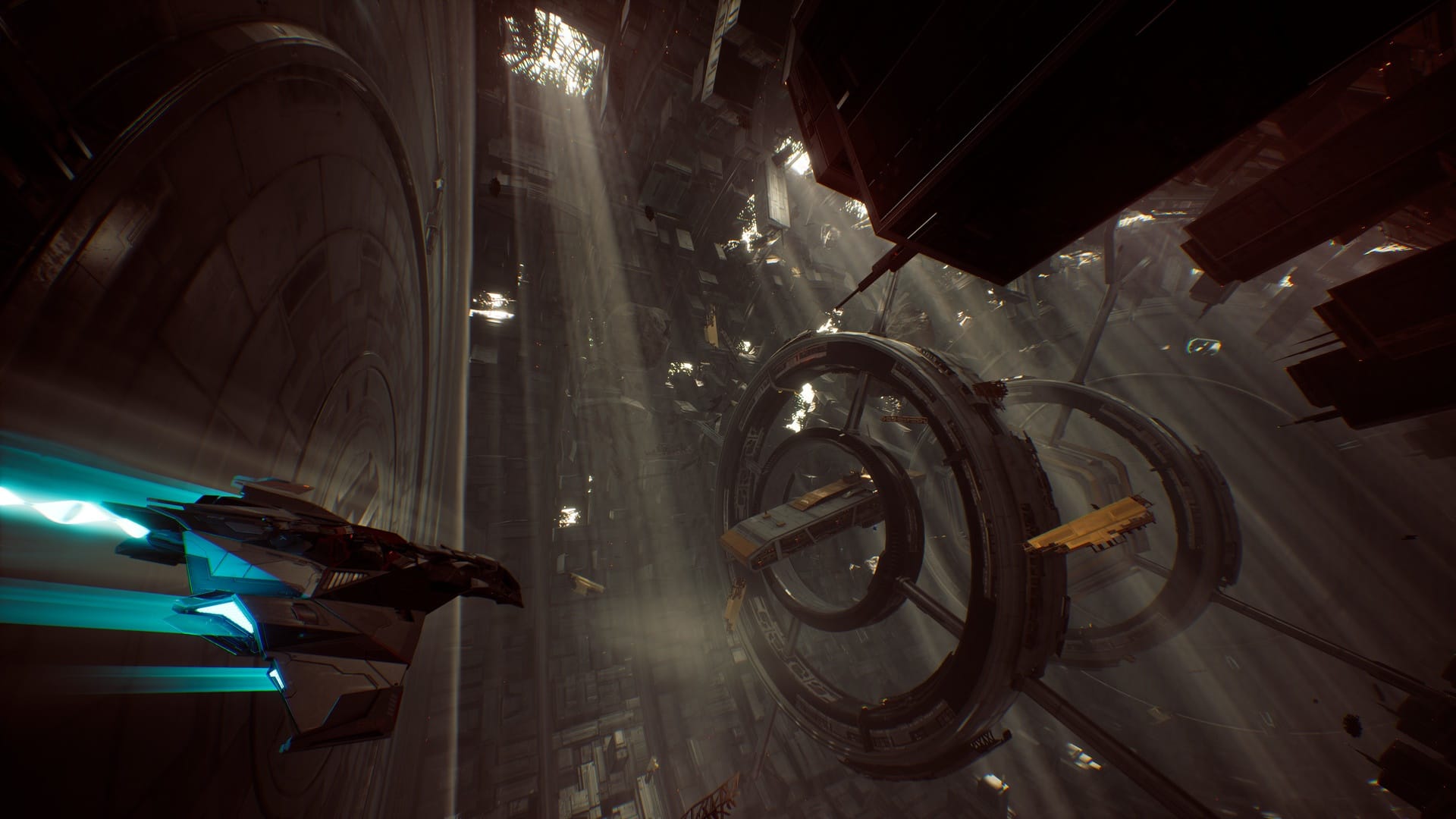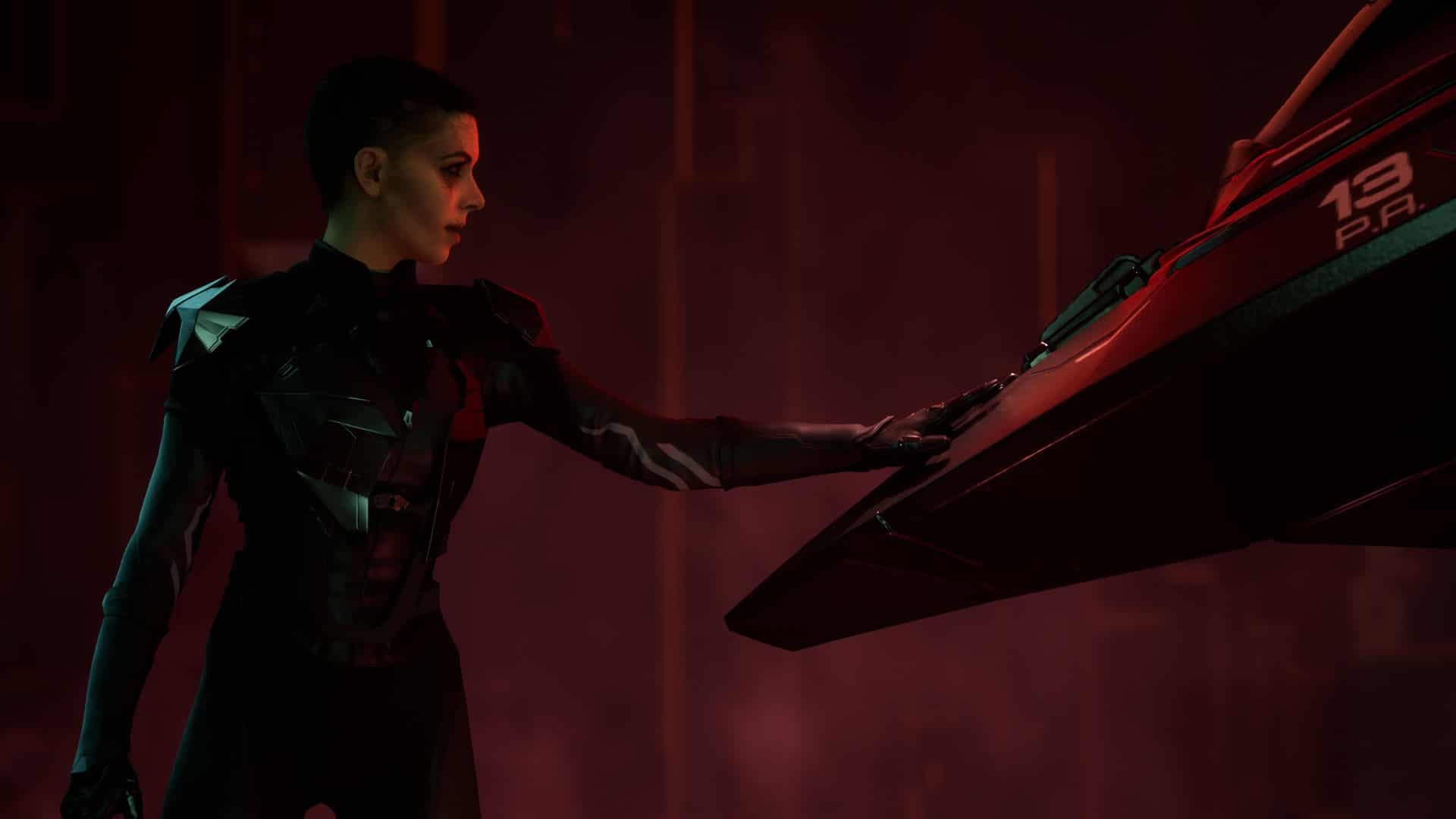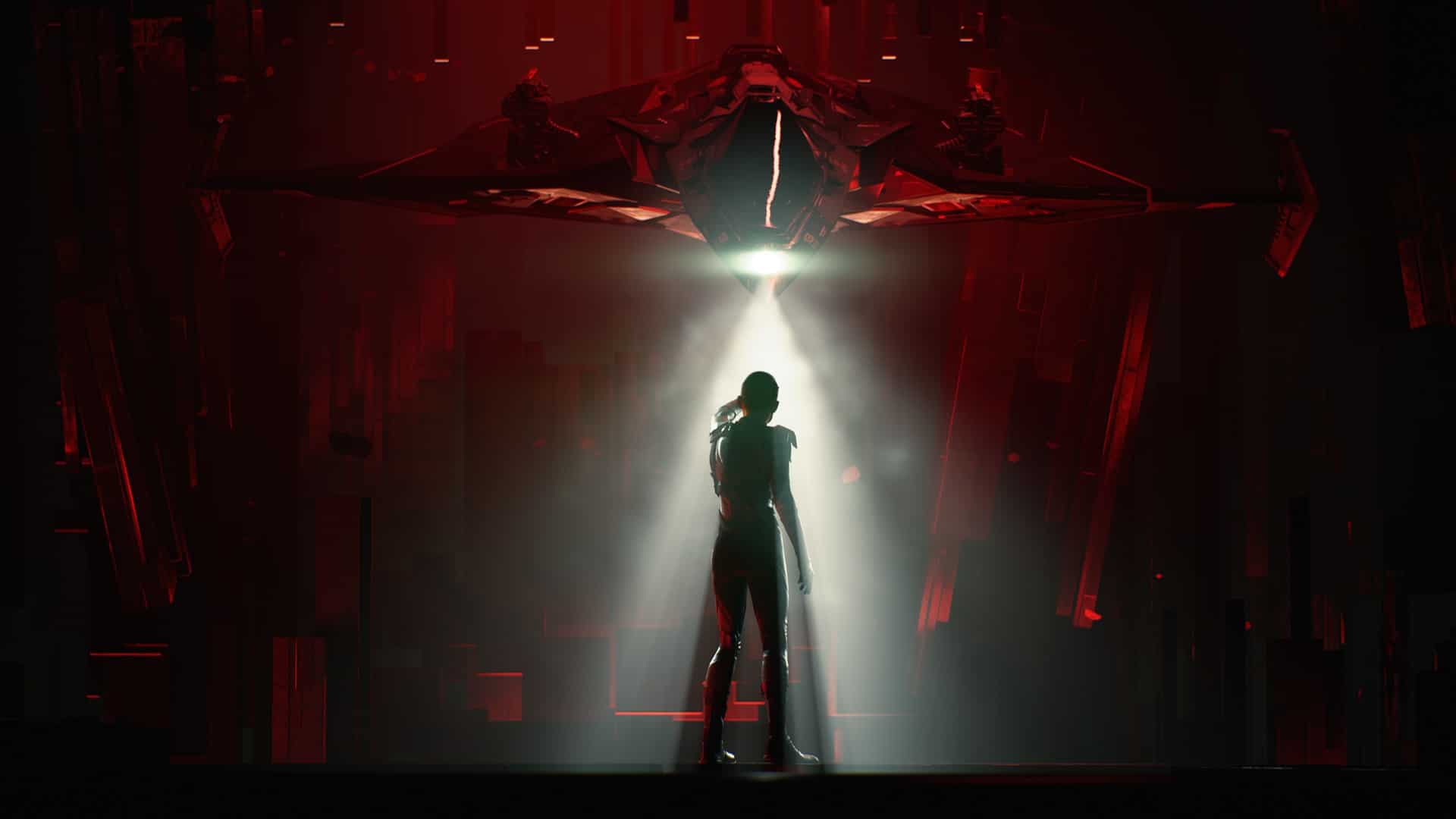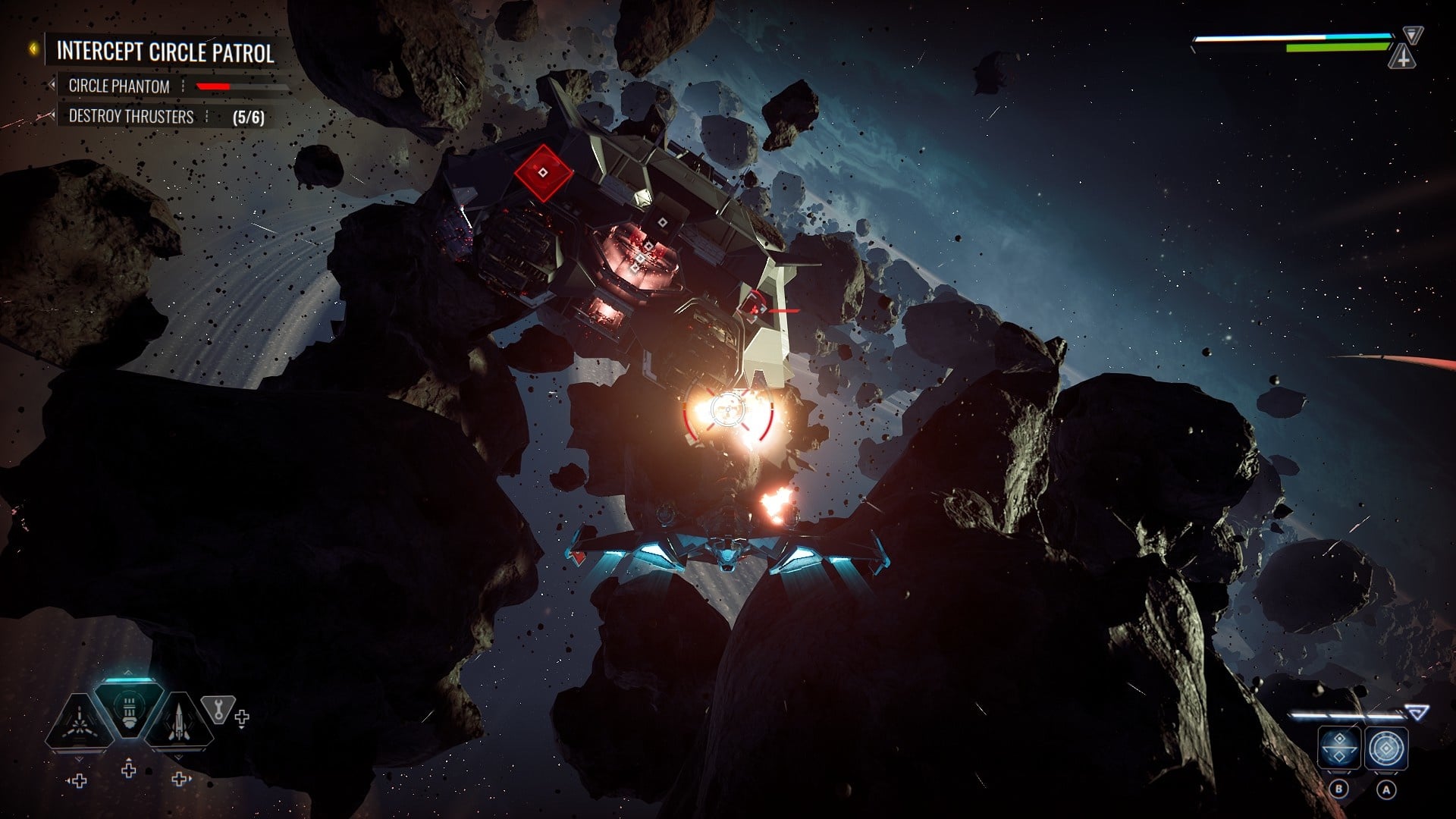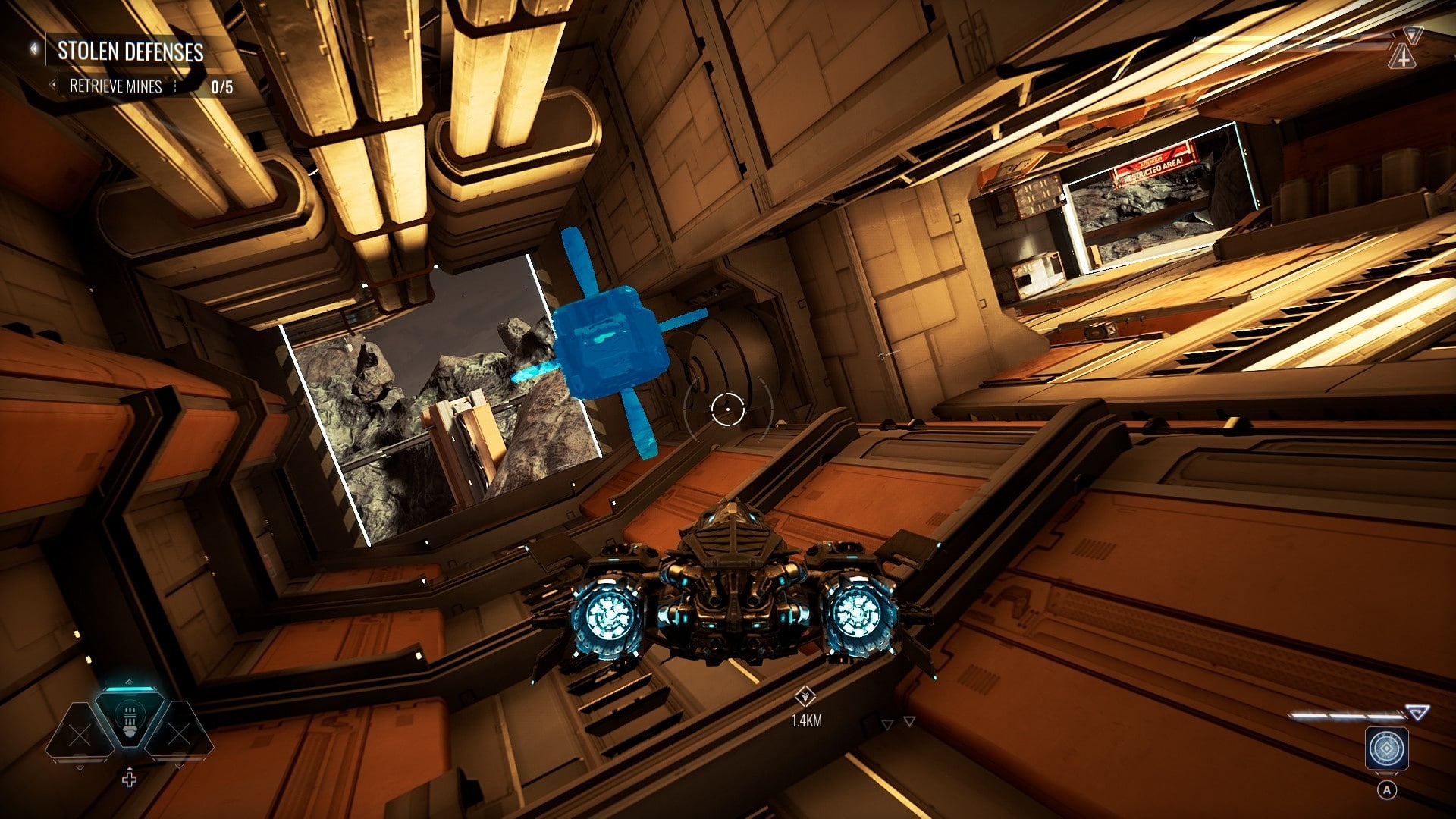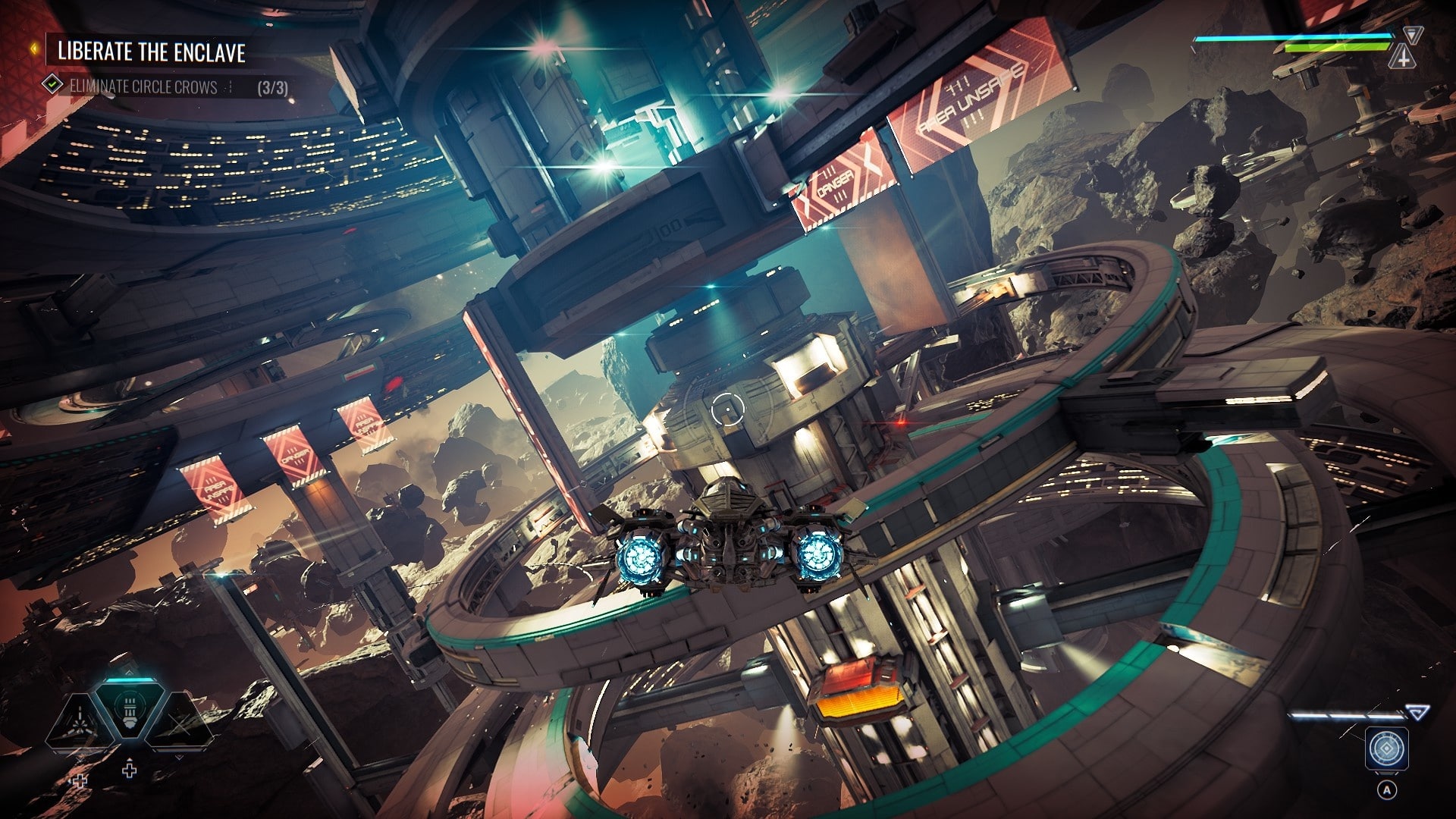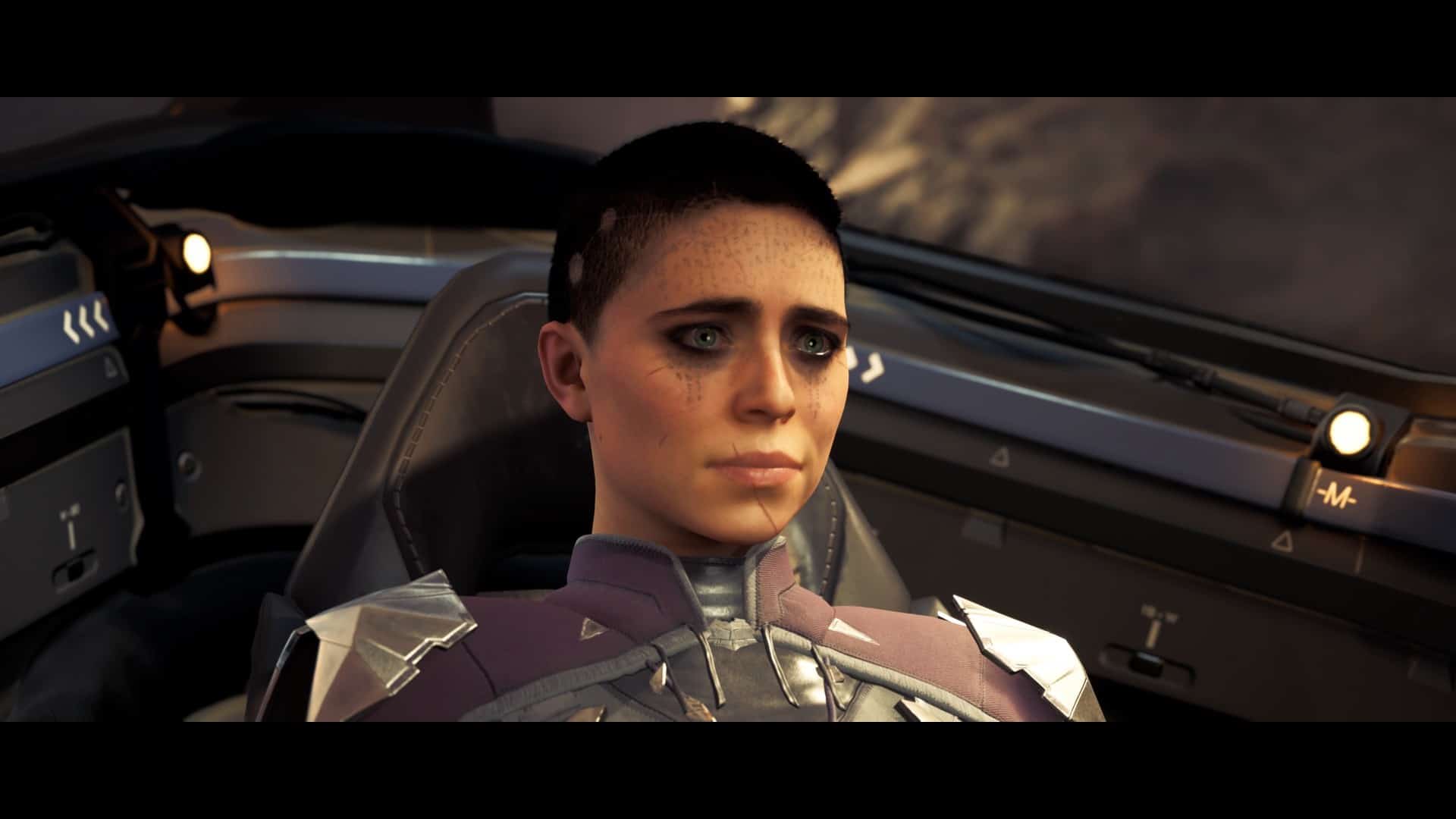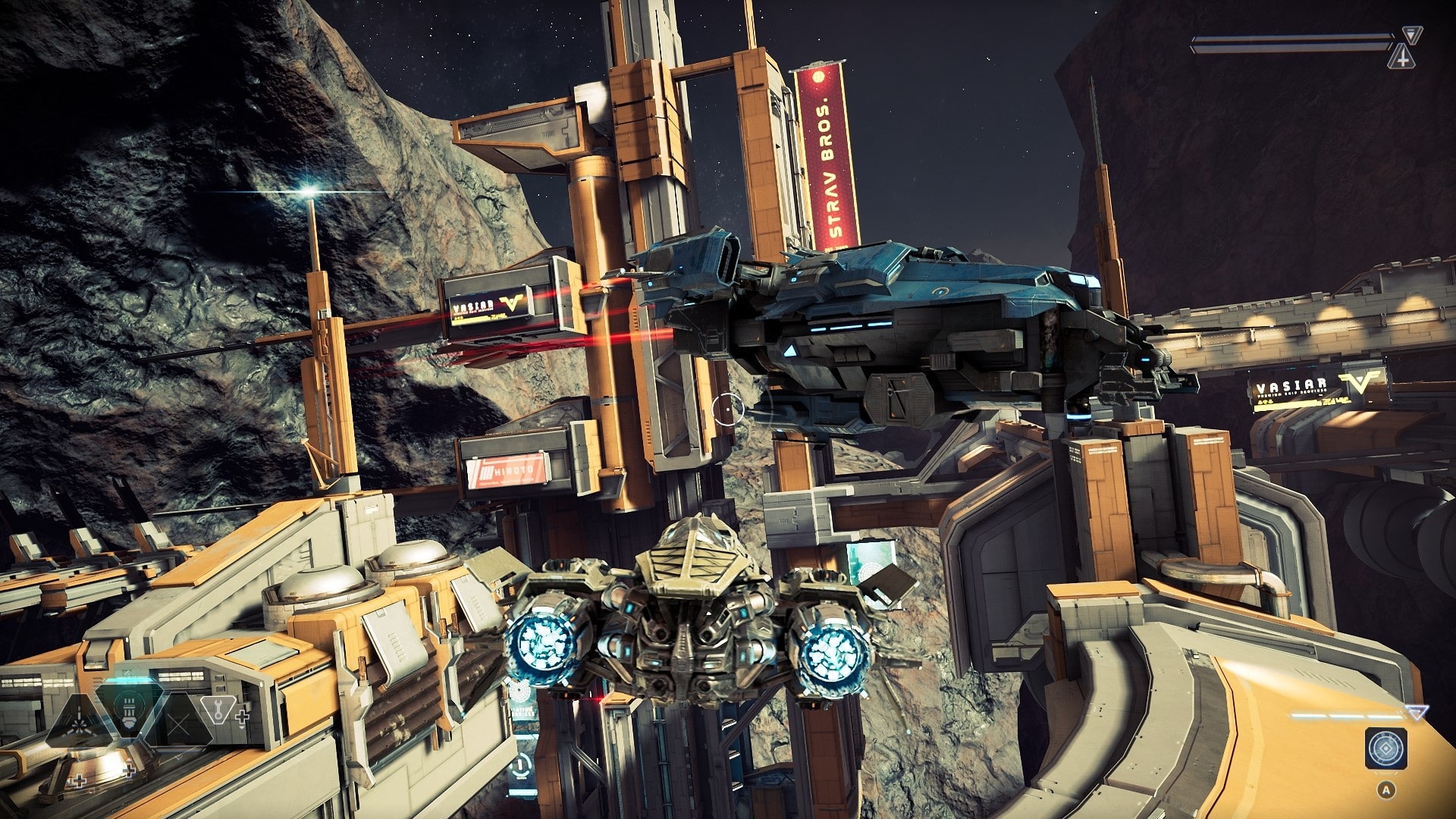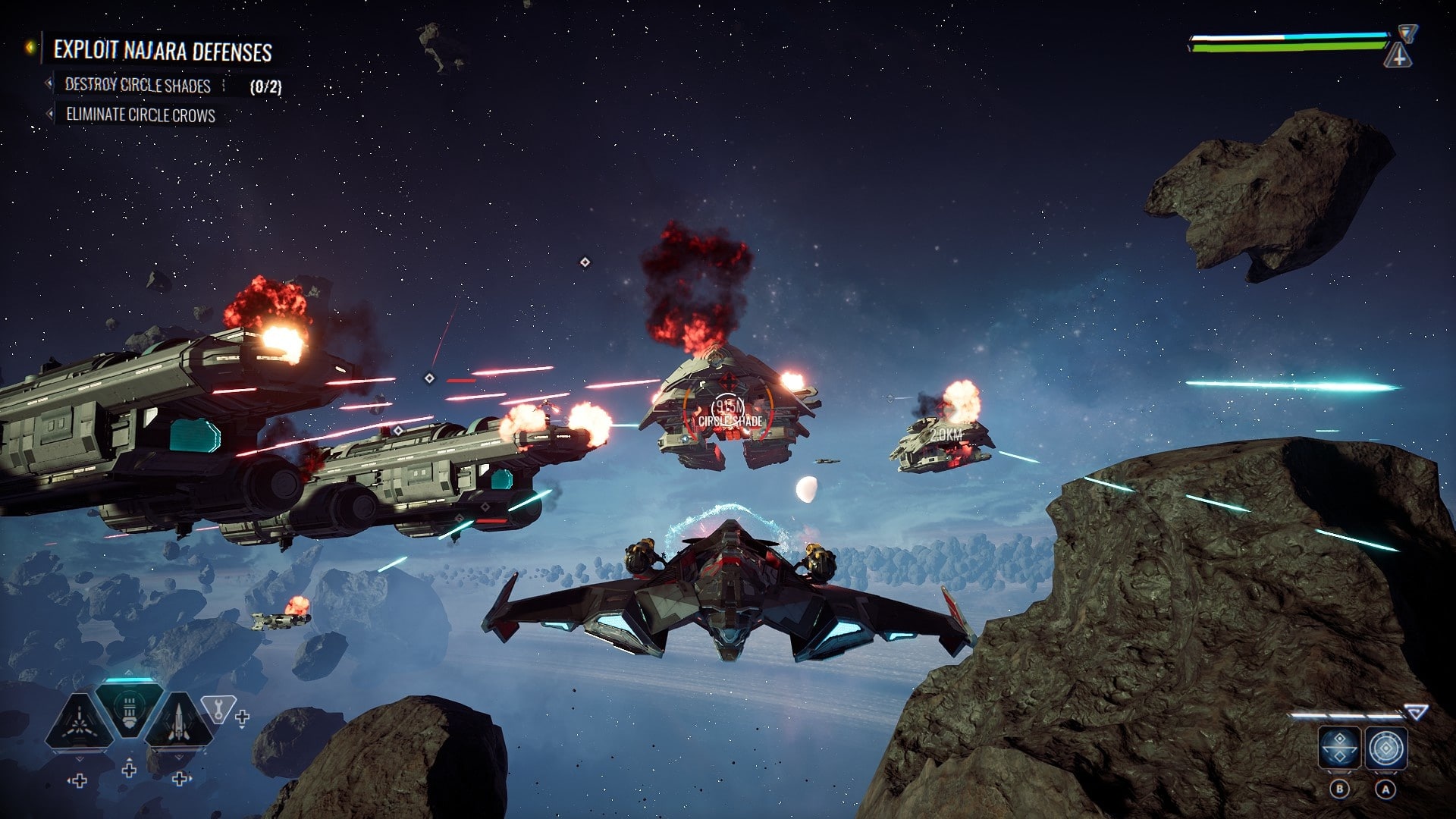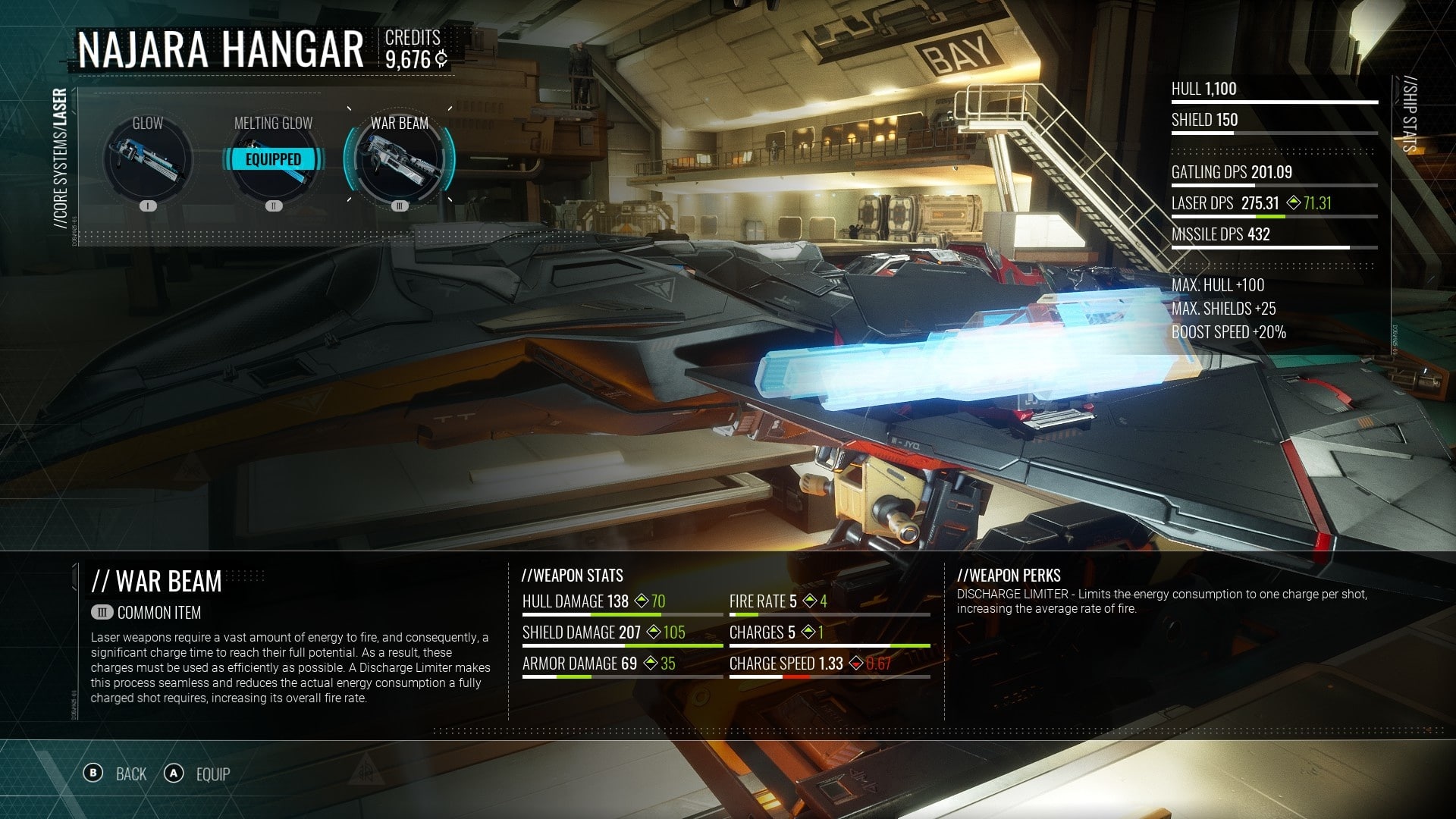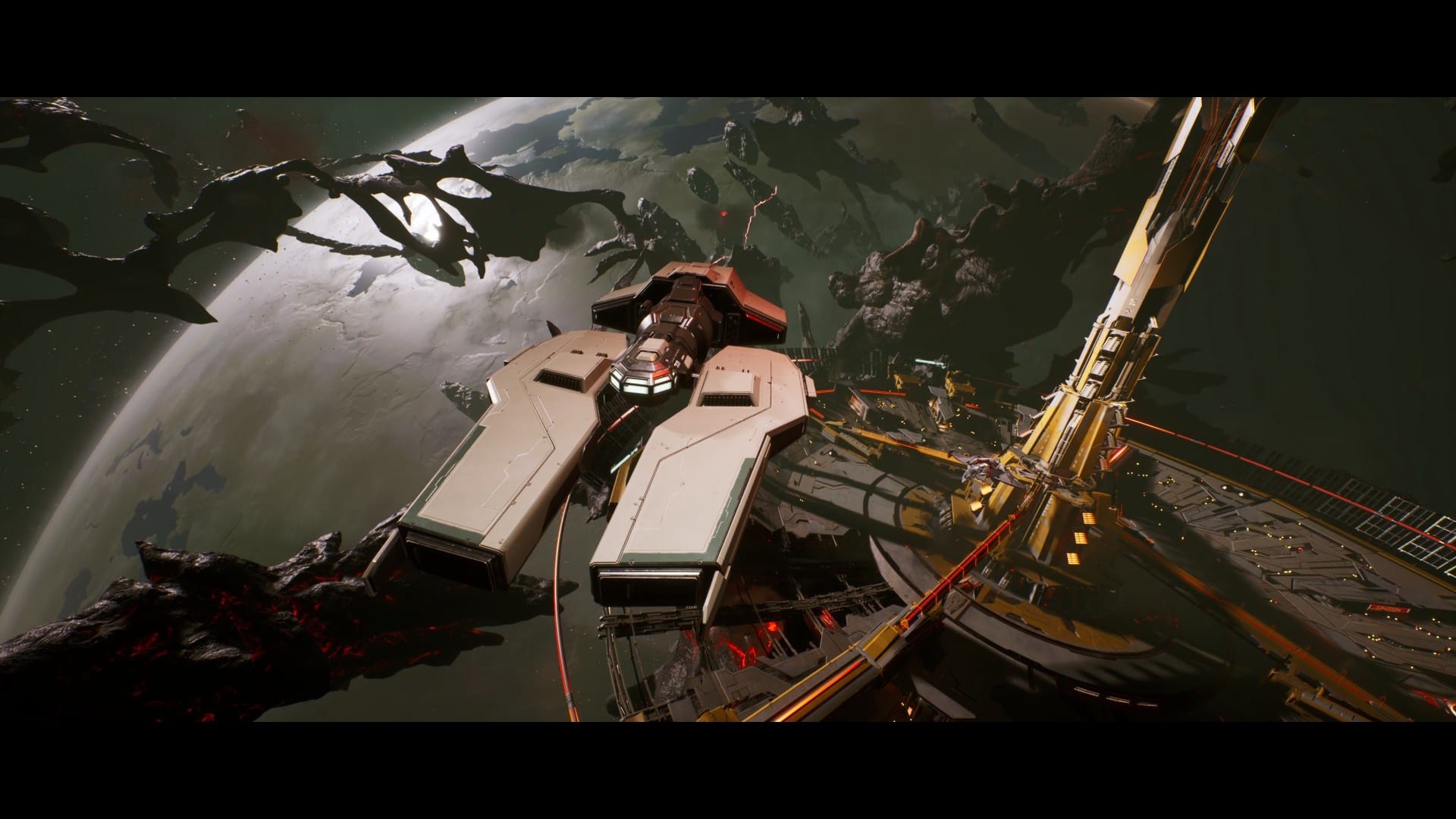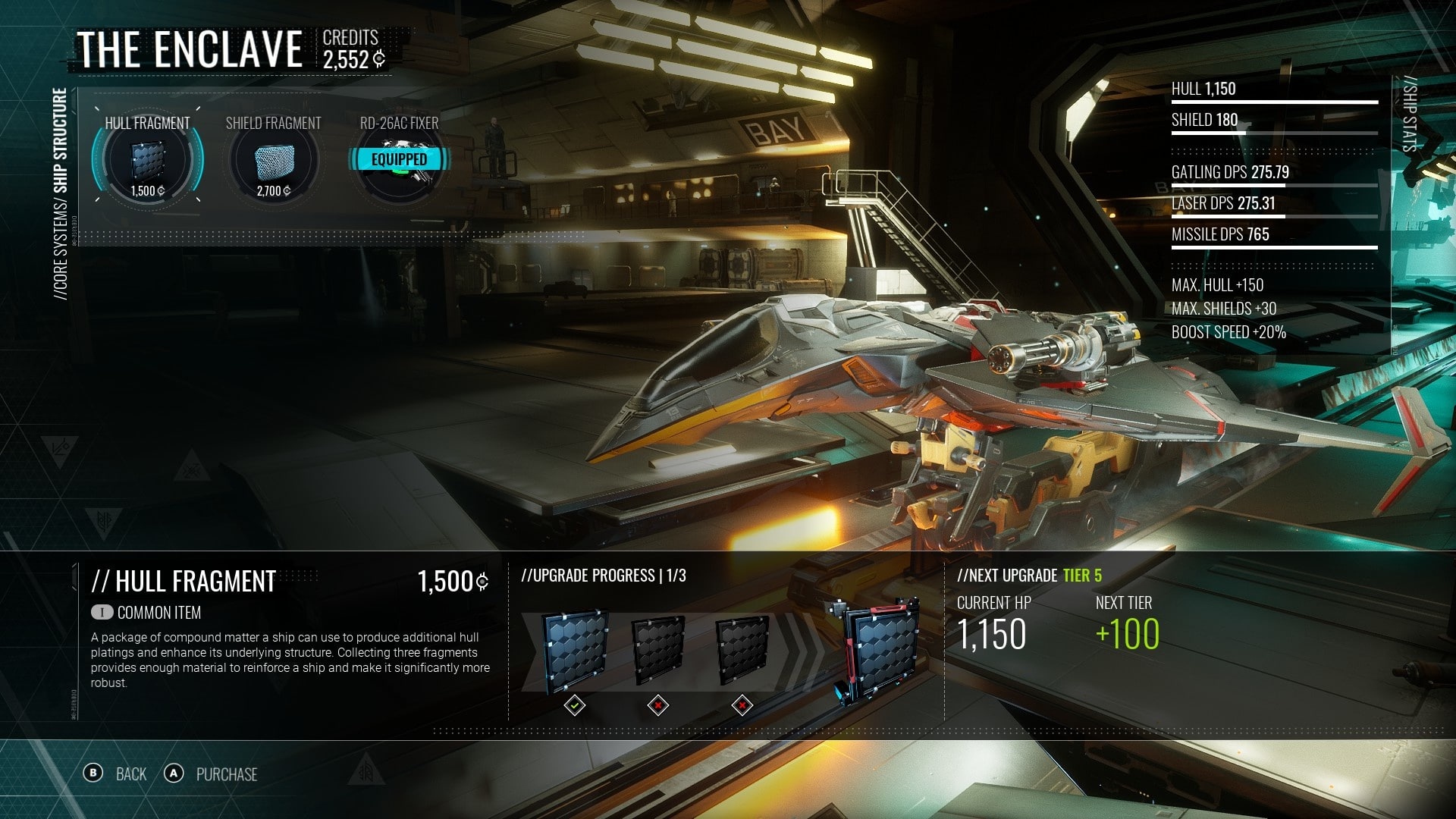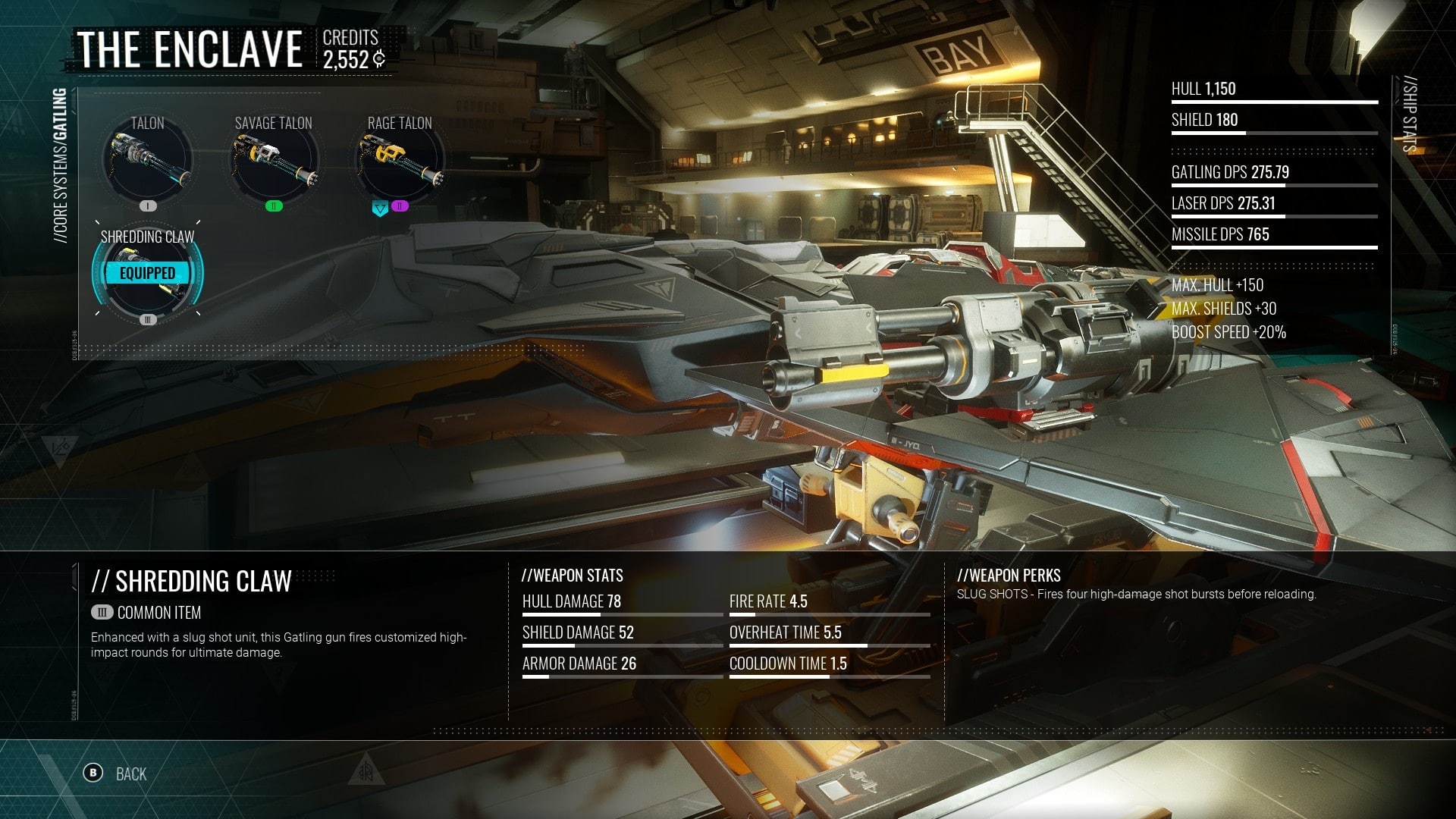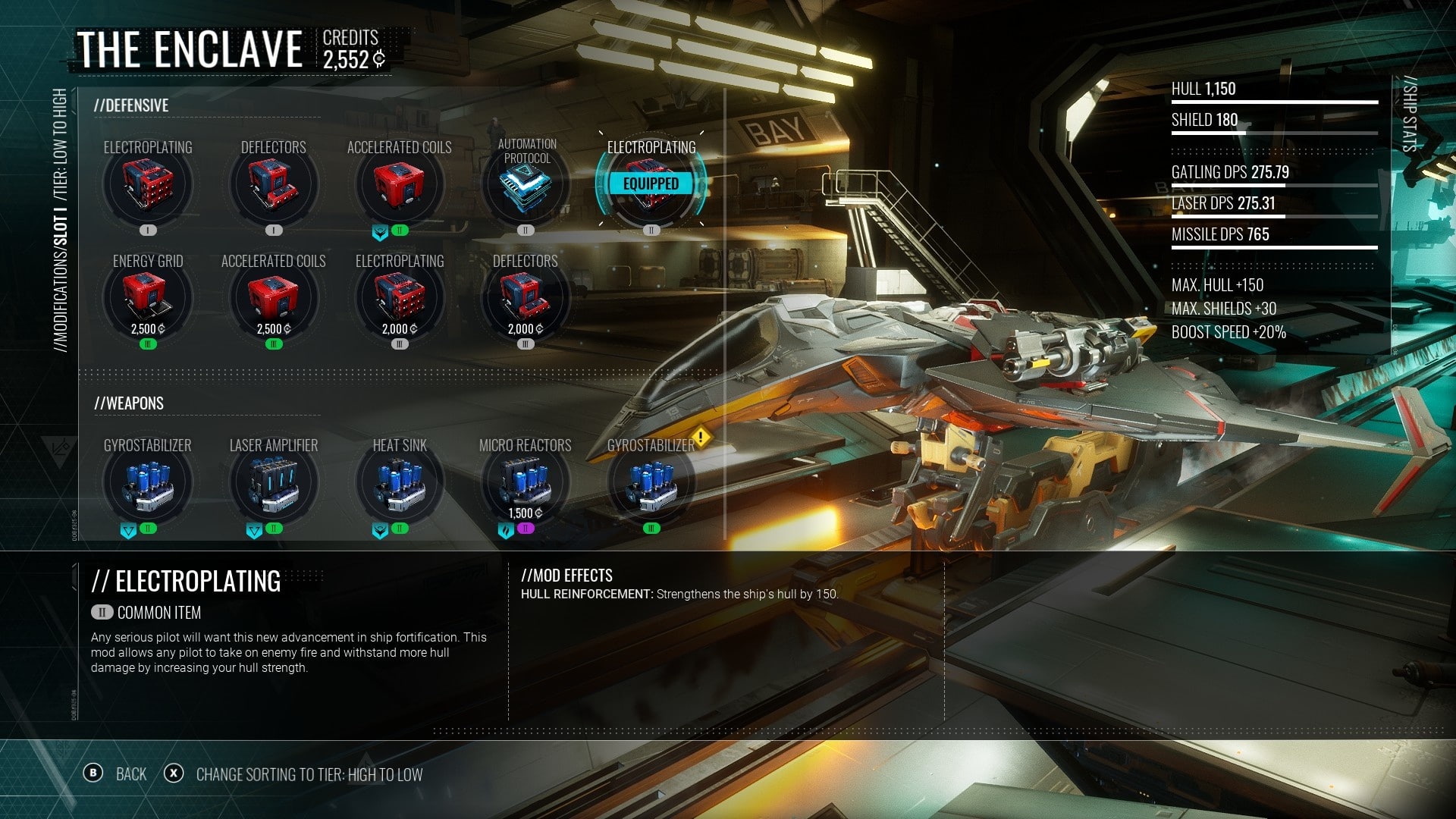Chorus looks great, plays great and offers fast-paced space action in one go, so that the game time flies by – literally.
With a fully powered booster, I race towards an enemy fighter squadron at insane speed. My Gatling gun cuts the first enemy in half on the first approach. My next victim protects himself with strong shields. I switch to my lasers and burn a hole in his energy barrier.
I race past his heavily armoured ship at breakneck speed, missing him by only a few centimetres. Then I hit the powerslide and continue to slide furiously in the direction of flight while I rotate my ship backwards around its own axis and bombard my opponent from behind with countless missiles. As he perishes in a huge explosion, I have no time to celebrate – the next enemy has already targeted me with his railgun.
A red glowing guiding beam is directed at Forsa, my thinking, feeling spaceship. I tap the left analogue stick of my controller at the right moment, make a perfect dodge roll, the railgun misses me. That didn’t always work out so well – without good timing, a shot like that will blow you up at worst, so a little practice never goes amiss.
At the touch of a button, I use my teleportation ability and materialise directly behind my opponent. He doesn’t get a chance for a second shot. Chorus plays awesome without any exaggeration, looks fantastic, sounds excellent and only leaves me a little melancholy at the end of its campaign because I want more.
This is how space battles go!
Chorus plays great from the first moment. The controls are precise, intuitive and easy to grasp – I prefer to play it with the gamepad, but your spaceship can be controlled just as well with the mouse and keyboard, especially since you can freely configure all the buttons. However, you shouldn’t hope for HOTAS and cockpit view, because this is a pure arcade shooter and not a simulation.
At the beginning of the game, you manoeuvre enemies out of the way with booster thrusts and skilful flying, and burn them away with your Gatling gun. Easy! But the further you progress in the ten to 15-hour campaign, the more challenging the battles become.
You gradually juggle three different types of weapons with their own strengths and weaknesses for different enemy types, unlock special manoeuvres such as slides and teleportation and even take on capital ships that you destroy from the inside out.
This challenges even experienced pilots, especially on the higher of the four difficulty levels, because even a few direct hits will destroy you. You can only get away with frontal attacks on standard fighters, all other enemies require precise manoeuvring.
Thanks to a very well-balanced difficulty curve, which slowly introduces you to new game mechanics, as well as generous checkpoints, there is no frustration even in difficult battles. Although you don’t fiddle around with energy distribution between any ship systems and don’t tinker with really complex upgrades, the battles are always challenging and, above all, gripping enough that I never felt underchallenged or even bored during the test.
At times, the challenge lies not only in the dangerous masses of enemies, but also in the twisting inner workings of spaceships, stations and alien ruins, through which you must safely guide your talking spaceship. If, like me, you are already slightly mouldy, this will remind you a little of Descent in places – in a positive sense.
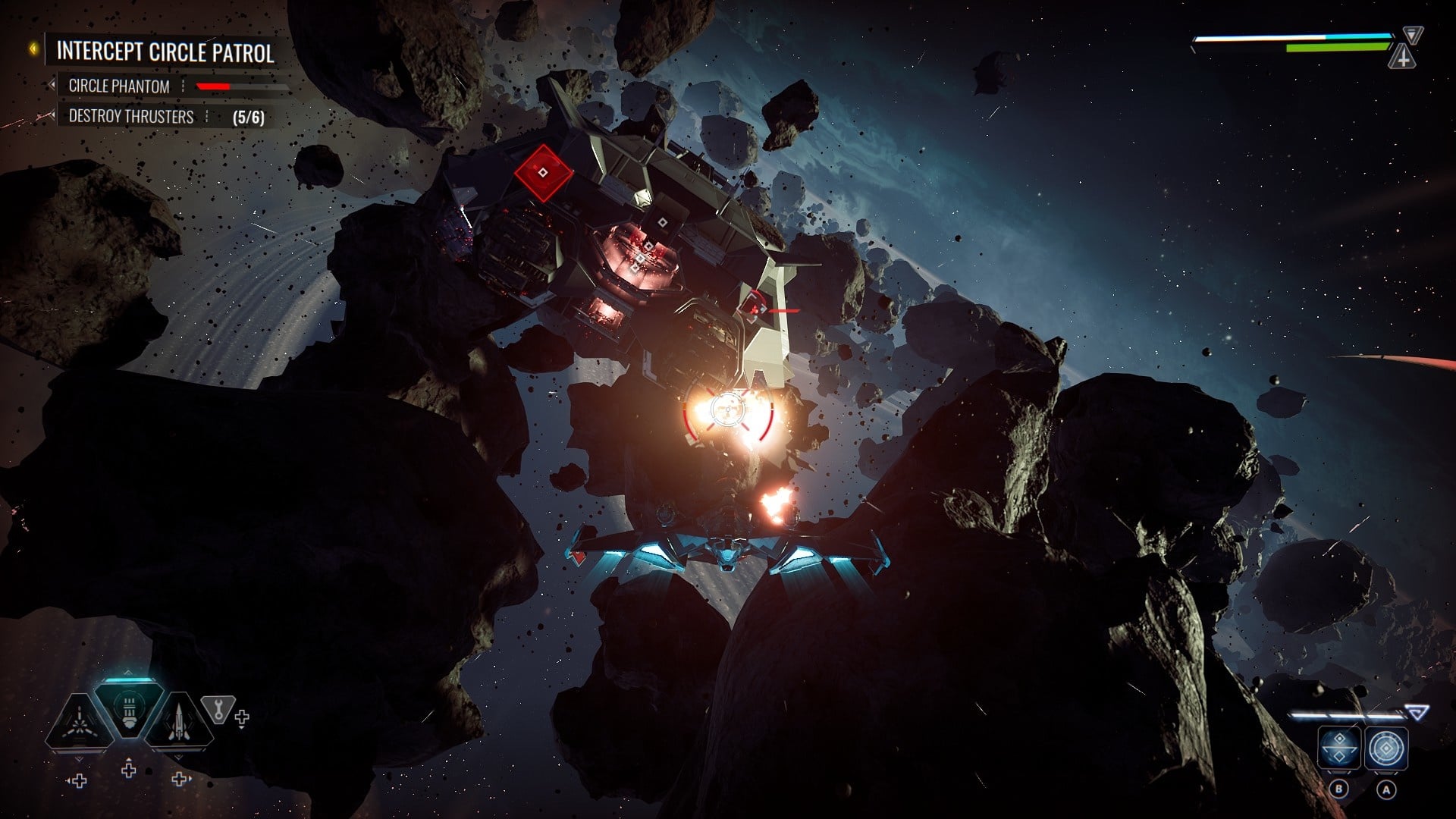
There’s really a lot of story in this
In the game, you play as Nara, a warrior with supernatural abilities who has destroyed an entire planet in the service of an evil cult. In the campaign, you accompany her on her path of purification. There are tons of dialogues and radio messages, many in-engine interludes and monologues in which you perceive Nara’s feelings and thoughts as a whisper.
However, all of this only comes with German subtitles and English voice-over, which is all the more irritating because the developer Deep Silver Fishlabs is from Hamburg. At least most of the conversations take place in quiet game situations, so you don’t have to read paragraphs of text in the middle of a fight and control a hunter at the same time.
And it’s worth paying attention, because Chorus’ story does have depth compared to its genre competitors. Nara finds visions of previous events in the game world and, along with her talking spaceship, reflects on events as evil cultists prey on families and innocent civilians. For a space shooter, this seems quite emotional, at least at first, but I really liked Nara as a pragmatic (anti-) heroine.
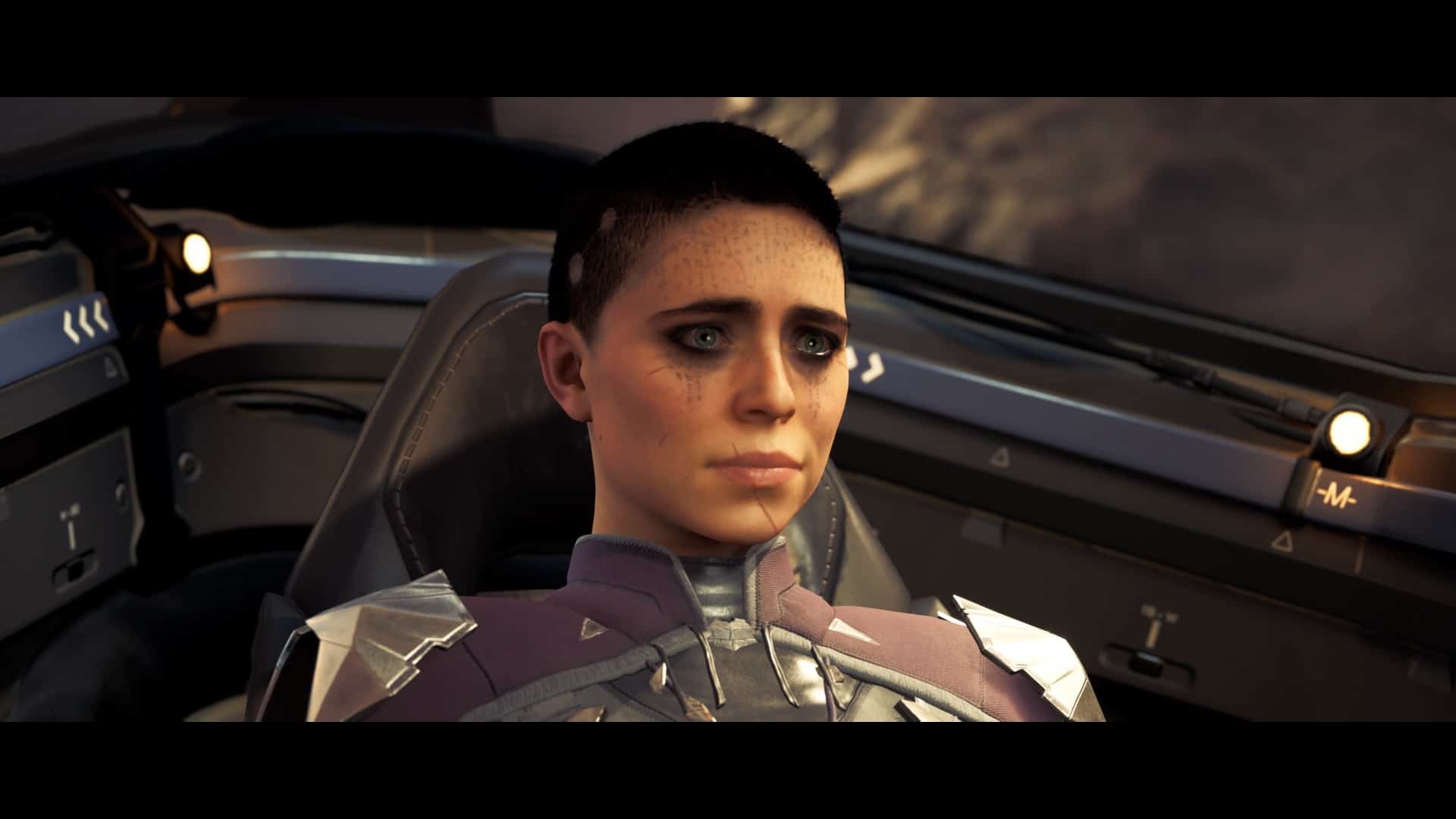
Besides the spectacular fights and the grandiose, semi-open game world, it also becomes clear in these story moments that Chorus is not a full-fledged AAA game with a huge budget. The character animations seem a bit stiff, Nara’s facial features don’t always portray emotions credibly.
And many quest givers share the same generic helmet profile picture, so that by the time you complete the mission you’ve already forgotten them. This is the weakest part of the otherwise fabulous presentation and doesn’t detract much from the action, especially since all the gameplay takes place exclusively in the spaceship.
You can complete the main story in less than ten hours, but in each explorable space sector there are heaps of side quests in which you can obtain weapons and upgrades. As is typical for the genre, you escort allied spaceships, beat back waves of enemies or clear a space station of mines and turrets.
In addition, there are randomly appearing, rather generic bonus missions in which you protect a ship for a few moments or help with a repair by pressing a button and get a few credits for it. There is always something to do everywhere. To really see everything, you can plan on around 15 hours.
The result: Short and sweet
For around 40 euros you get a good half dozen worth seeing, very large, explorable areas full of quests, a handful of simple upgrades (more hull strength and shields, faster boosters, a few different versions of the three weapon types and so on), a well-told story with a groovy soundtrack and great ship designs.
Apart from speed runs or a new attempt at a higher difficulty level, there is relatively little replay value here. You also don’t unlock countless new spaceships, but experience your adventure mainly from Forsa’s cockpit.
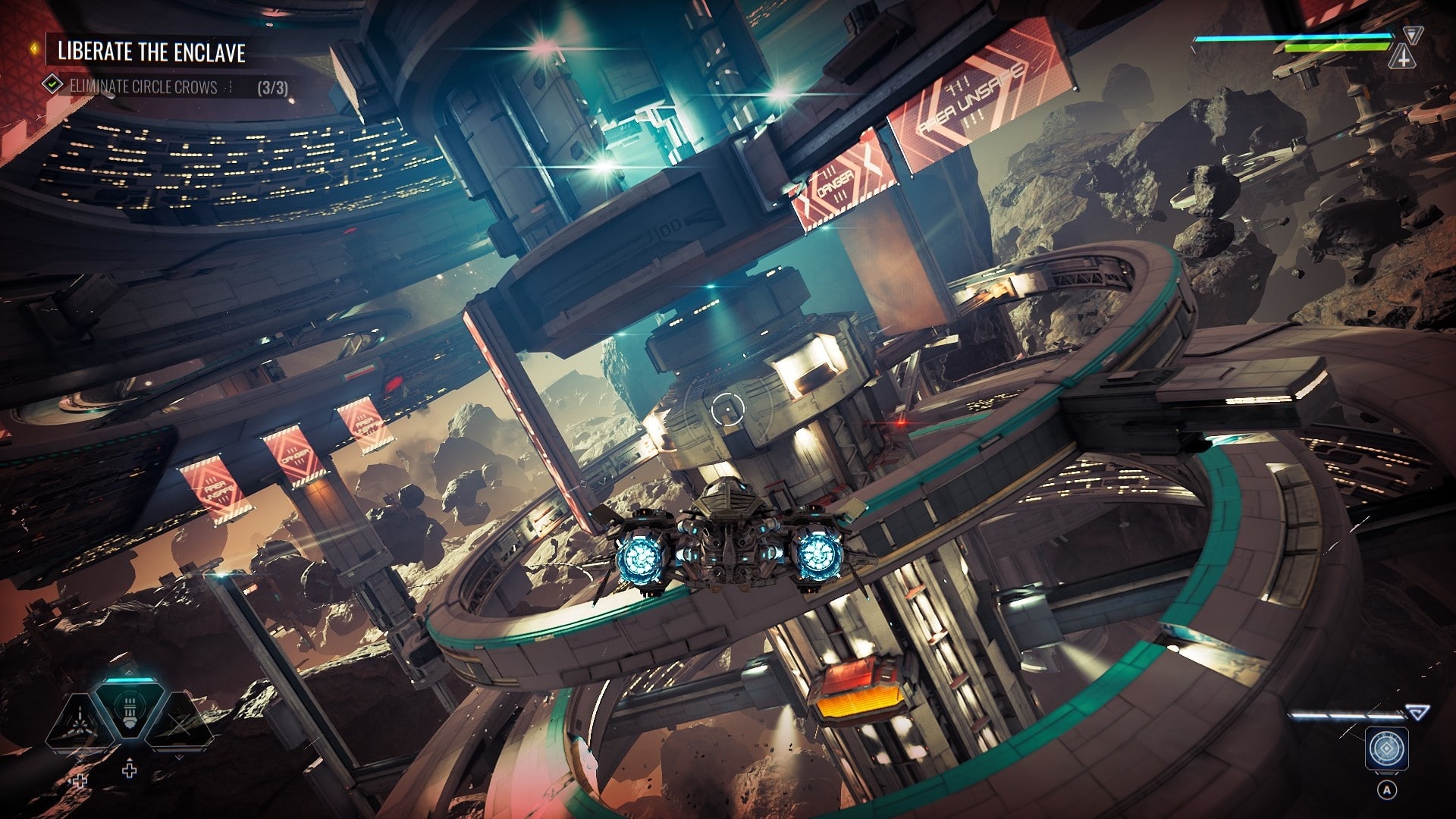
Technically, there was nothing to complain about in my pre-release version for PC. The game runs with Unreal Engine, runs in 4K without any problems and also has no frame cap if your peephole can display a refresh rate beyond 60 hertz. Ray tracing settings were not yet available in the version I tested, but according to the developer Discord, they will be coming in the future. HDR was also not an option in the test. Crashes, script dropouts or notable bugs were not noticeable at any time.
While the rest of the world is happy about Battlefield, Pokémon, Forza, GTA, Skyrim, Call of Duty and Halo, I’m just grateful when a studio has the balls to take on a new IP instead of always throwing up reboots, remakes, remasters and sequels – and then in a genre in which far too little has been happening for countless years! Chorus is quite simply awesome! From the creamy controls to the insane sense of speed to the insane manoeuvres I can pull off here instead of just flying in circles against the AI, I’m really excited about this game! Now I hope it does well enough to allow for an expansion or sequel in the future. Yes, I am aware of the irony, thank you.

